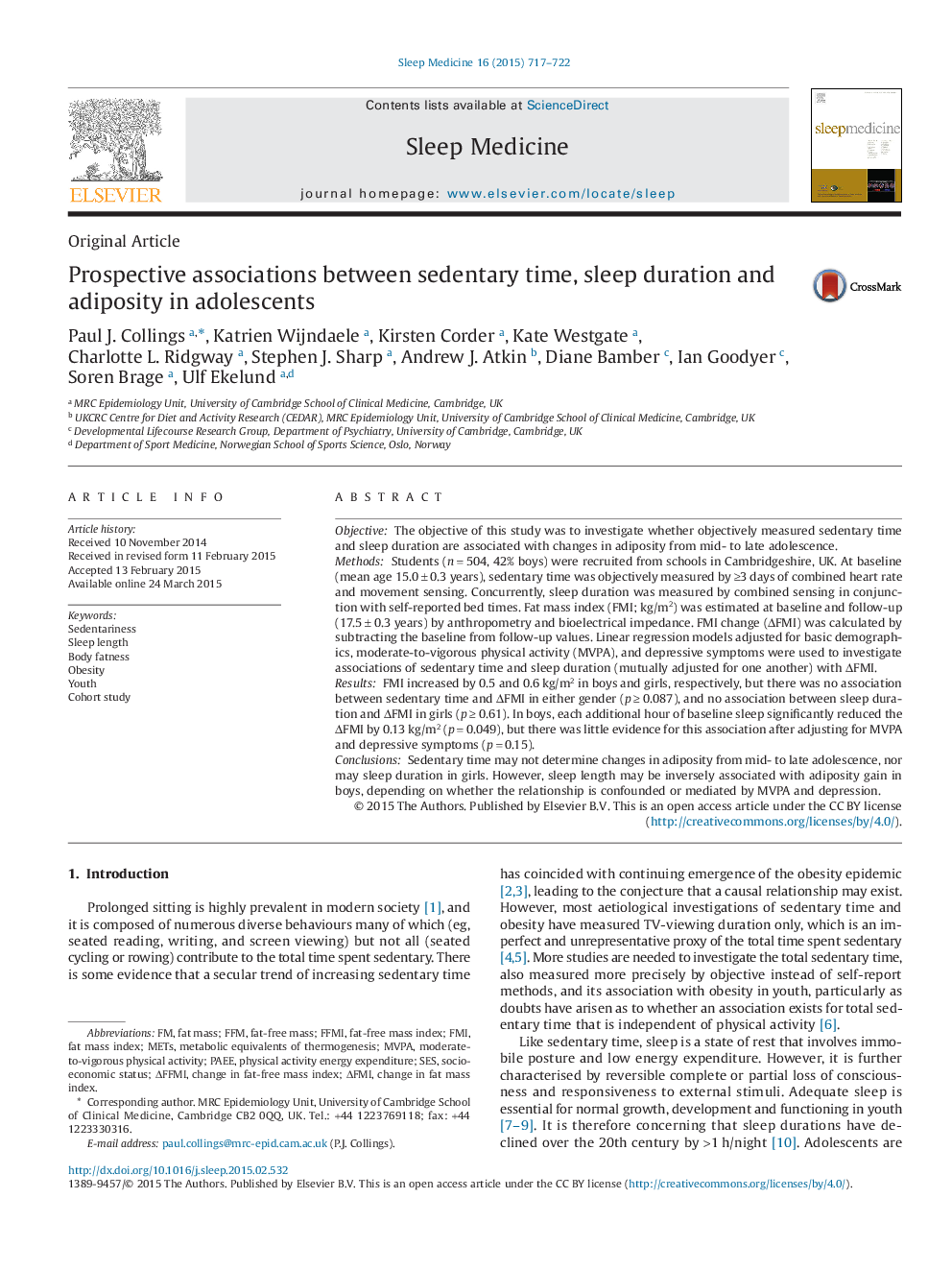| کد مقاله | کد نشریه | سال انتشار | مقاله انگلیسی | نسخه تمام متن |
|---|---|---|---|---|
| 6060713 | 1200236 | 2015 | 6 صفحه PDF | دانلود رایگان |
- We examined sedentary time and sleep length relative to changes in youth adiposity.
- Sedentary time was not associated with change in adiposity in either gender.
- Sleep duration was significantly inversely associated with adiposity gain in boys.
- The association for sleep in boys was attenuated by physical activity and depression.
ObjectiveThe objective of this study was to investigate whether objectively measured sedentary time and sleep duration are associated with changes in adiposity from mid- to late adolescence.MethodsStudents (nâ=â504, 42% boys) were recruited from schools in Cambridgeshire, UK. At baseline (mean age 15.0â±â0.3 years), sedentary time was objectively measured by â¥3 days of combined heart rate and movement sensing. Concurrently, sleep duration was measured by combined sensing in conjunction with self-reported bed times. Fat mass index (FMI; kg/m2) was estimated at baseline and follow-up (17.5â±â0.3 years) by anthropometry and bioelectrical impedance. FMI change (ÎFMI) was calculated by subtracting the baseline from follow-up values. Linear regression models adjusted for basic demographics, moderate-to-vigorous physical activity (MVPA), and depressive symptoms were used to investigate associations of sedentary time and sleep duration (mutually adjusted for one another) with ÎFMI.ResultsFMI increased by 0.5 and 0.6âkg/m2 in boys and girls, respectively, but there was no association between sedentary time and ÎFMI in either gender (pââ¥â0.087), and no association between sleep duration and ÎFMI in girls (pââ¥â0.61). In boys, each additional hour of baseline sleep significantly reduced the ÎFMI by 0.13âkg/m2 (pâ=â0.049), but there was little evidence for this association after adjusting for MVPA and depressive symptoms (pâ=â0.15).ConclusionsSedentary time may not determine changes in adiposity from mid- to late adolescence, nor may sleep duration in girls. However, sleep length may be inversely associated with adiposity gain in boys, depending on whether the relationship is confounded or mediated by MVPA and depression.
Journal: Sleep Medicine - Volume 16, Issue 6, June 2015, Pages 717-722
